Themed collection Recipients of the Dalton Transactions UC Berkeley Lecture

Isotopic labelling in ethylene oligomerization: addressing the issue of 1-octene vs. 1-hexene selectivity
The selectivity-determining mechanistic steps of ethylene tetramerization and trimerization are evaluated in light of isotopic labeling experiments.
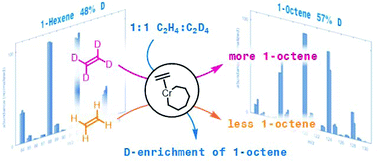
Dalton Trans., 2019,48, 40-44
https://doi.org/10.1039/C8DT04509G
Activation of CS2 by a “masked” terminal nickel sulfide
Activation of carbon disulfide (CS2) by “masked” terminal nickel sulfide, [K(18-crown-6)][(LtBu)Ni(S)], gives a trithiocarbonate complex. This result confirms the nucleophilicity of the sulfide ligand and expands the scope of reactivity for late metal sulfides.

Dalton Trans., 2016,45, 14508-14510
https://doi.org/10.1039/C6DT00885B
On the coordination non-innocence of antimony in nickel(II) complexes of the tetradentate (o-(Ph2P)C6H4)3Sb ligand
The coordination non-innocence of antimony toward Cl− in ClNi(o-(Ph2P)C6H4)3SbCl results from both structural and electronic effects.
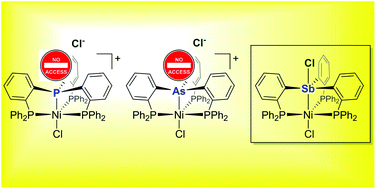
Dalton Trans., 2017,46, 5598-5604
https://doi.org/10.1039/C6DT04817J
Thermodynamics of N–H bond formation in bis(phosphine) molybdenum(II) diazenides and the influence of the trans ligand
Dinitrogen-derived molybdenum alkyldiazenides and alkylhydrazides were synthesized with various trans ligands. The thermodynamics of N–H bond formation were studied both experimentally and computationally.
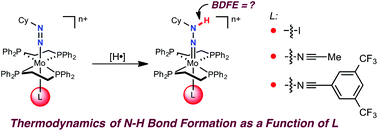
Dalton Trans., 2016,45, 15922-15930
https://doi.org/10.1039/C6DT01932C
Metallo-Wittig chemistry of an alkylidene to form a terminal titanium oxo complex
The synthesis and characterization of a terminal titanium oxo complex generated by alkylidene benzophenone cross-metathesis is reported.
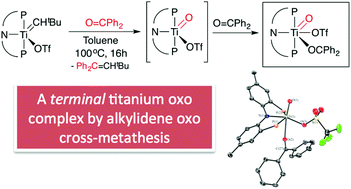
Dalton Trans., 2016,45, 15894-15901
https://doi.org/10.1039/C6DT01534D
Supramolecular adducts based on weak interactions between the trimeric Lewis acid complex (perfluoro-ortho-phenylene)mercury and polypnictogen complexes
The adduct formation of the trinuclear Hg Lewis acid [(o-HgC6F4)3] with polypnictogen complexes is described focusing on the varying interaction modes based on the nature of the donor atoms P, As, Sb or Bi.
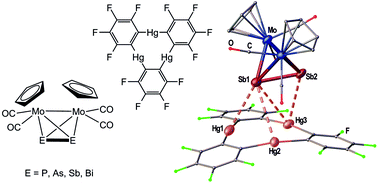
Dalton Trans., 2016,45, 13742-13749
https://doi.org/10.1039/C6DT02507B
Multi-electron redox processes at a Zr(IV) center facilitated by an appended redox-active cobalt-containing metalloligand
The reactivity of a reduced heterobimetallic Co−I/ZrIV complex with a series of azido and diazo reagents is explored to demonstrate the feasibility of facilitating two-electron redox processes at a formally d0 Zr(IV) center using the appended Co fragment exclusively as an electron-reservoir.
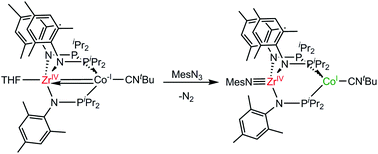
Dalton Trans., 2016,45, 11182-11190
https://doi.org/10.1039/C6DT01498D
Qualitative extension of the EC′ Zone Diagram to a molecular catalyst for a multi-electron, multi-substrate electrochemical reaction
Traverse the EC′ Zone Diagram with a molecular H2-evolving electrocatalyst through systematic variation of the acid pKa, scan rate, acid concentration and catalyst concentration.

Dalton Trans., 2016,45, 9970-9976
https://doi.org/10.1039/C6DT00302H
Monoanionic bis(carbene) pincer complexes featuring cobalt(I–III) oxidation states
The synthesis and characterization of a series of cobalt complexes featuring a pincer bis(carbene) ligand of the meta-phenylene-bridged bis-N-heterocyclic carbene (ArCCC, Ar = 2,6-diispropylphenyl or mesityl) are reported.

Dalton Trans., 2016,45, 9805-9811
https://doi.org/10.1039/C5DT04723D
A doubly deprotonated diimine dioximate metalloligand as a synthon for multimetallic complex assembly
An electrocatalytically active cobalt diimine dioximate metalloligand was prepared and explored as a precursor for a variety of multimetallic complexes with Co–Zn, –Cd, –Mn, and –Ru coordination.
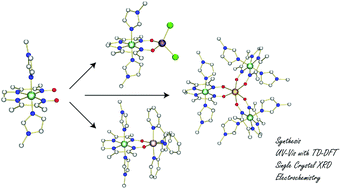
Dalton Trans., 2016,45, 10068-10075
https://doi.org/10.1039/C5DT03650J
Supramolecular aggregation of Ni(salen) with (C6F5)2Hg and [o-C6F4Hg]3
Organomercurials (C6F5)2Hg and [o-C6F4Hg]3 interact with Ni(II)-salen to form adducts held by arene-perfluoroarene and hydrogen bonding interactions, as well as interactions between Hg, the salen ligand, and Ni.
![Graphical abstract: Supramolecular aggregation of Ni(salen) with (C6F5)2Hg and [o-C6F4Hg]3](/en/Image/Get?imageInfo.ImageType=GA&imageInfo.ImageIdentifier.ManuscriptID=C5DT01887K&imageInfo.ImageIdentifier.Year=2016)
Dalton Trans., 2016,45, 5045-5051
https://doi.org/10.1039/C5DT01887K
N-heterocyclic phosphenium and phosphido nickel complexes supported by a pincer ligand framework
A tridentate ligand framework containing a central N-heterocyclic phosphenium cation (NHP+) has been coordinated to nickel. Among the compounds reported is a series of [(PPP)Ni]20/+/2+ dimers in three different redox states.
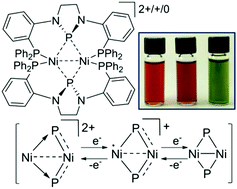
Dalton Trans., 2016,45, 1918-1929
https://doi.org/10.1039/C5DT03549J
About this collection
The Dalton Transactions UC Berkeley Lecture is given annually to an outstanding young investigator in the general field of inorganic chemistry. Previous recipients include Jilliam L Dempsey, Kit Cummins, John Hartwig, Geoff Coates, Paul Chirik, Dan Mindiola, Teri Odom, Daniel Gamelin, Trevor Hayton, Christine Thomas, Mircea Dinca, Alison Fout and Brandi M Cossairt. This themed collection highlights some of the excellent work that the past recipients have published recently in Dalton Transactions.
The 2019 - 2020 recipient of the Dalton Transactions UC Berkeley Lecture is Theodor Agapie (Caltech).